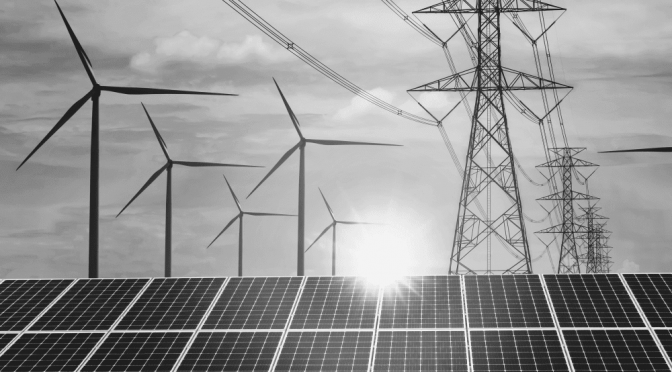The US PV industry is booming, with record installations and a projection of tripling capacity by 2034.
This growth is driven by supportive policies such as the Inflation Reduction Act and increasing demand for clean energy.
Despite this progress, the US PV industry faces challenges from Chinese competition and the need to balance domestic manufacturing goals with affordable solar panel prices.
The US is experiencing record growth in PV capacity, thanks to increased public and private investment in the sector. The PV industry, which was already growing rapidly, experienced a boom following the introduction of the Inflation Reduction Act (IRA) and other supportive policies. This growth is expected to continue, with several large-scale plants in the pipeline over the next decade, supported by the deployment of utility-scale battery storage across the country. The PV boom has supported growth in the US manufacturing sector and led to the creation of thousands of jobs. However, competition with China and tariffs on renewable energy equipment have cast a shadow over the US solar industry at a time when it should be untouchable.
In the first quarter of 2024, solar installations increased 21 percent year-over-year, bringing cumulative US PV capacity to more than 100 GW. About 3,379 MW of utility-scale PV was deployed in the first quarter and about 11.8 GW of new capacity in total. More than 56 GW of PV is expected to come online in 2024, as well as 11 GW of wind power generation. This leads experts to suggest that wind and solar power could soon surpass coal generation for the first time in U.S. history.
The Solar Energy Industries Association (SEIA) reports that there are currently approximately 5 million solar projects in the U.S., including both utility-scale and distributed solar installations. Over the next six years, this number is expected to rise to 10 million projects. The number of solar installations in the United States is projected to triple between now and 2034, and by 2050 it could be the largest source of generating capacity on the U.S. power grid.
About 97 percent of U.S. solar installations are located on residential rooftops, and about 7 percent of homes have solar power. By 2030, it is projected that 15 percent of homes will have solar power. There is currently enough installed solar capacity to power 32.5 million American homes, and by 2034 this could increase to 100 million homes. The solar energy sector now contributes to the reduction of around 198 million metric tons of carbon dioxide each year, which is roughly equivalent to the CO2 produced at 53 coal-fired power plants.
The US solar industry has grown significantly in the post-pandemic period thanks to the increased availability of panels and other equipment. Favorable policies at the federal and state levels supported this expansion and helped ensure that projects could be connected to the grid. “Not only has the global solar supply chain expanded, but module imports to the US have also increased significantly over the past year,” according to a report published by Wood Mackenzie and the Solar Energy Industries Association in June this year. Between June 2023 and March 2024, the US imported 49 GW of solar modules. In addition, domestic solar panel manufacturing capacity increased to 26.6 GW in the first quarter of this year, from 15.6 gigawatts in the previous quarter.
In September of this year, it was reported that US domestic manufacturing capacity surpassed 31 GW, a four-fold increase since the introduction of the IRA in the summer of 2022. Abigail Ross Hopper, President and CEO of the Solar Energy Industries Association (SEIA), stated: “The solar and storage industry is turning federal clean energy policies into action by rapidly creating jobs and driving economic growth in all 50 states, particularly in battleground states like Arizona, Nevada, and Georgia.”
The solar power industry directly supports around 280,000 jobs, with the number of jobs in the sector rising by around 6 percent in 2023, according to the National Solar Jobs Census. The growing number of jobs in solar energy reflects President Biden’s pledge to create millions of jobs through the green transition.
However, while the U.S. solar industry is going from strength to strength, there is a shadow being cast over the sector. The U.S. is in a trade war with China, which has been exporting artificially cheap solar panels with a large carbon footprint to the U.S. for years. Since the introduction of the IRA – and in line with Made in America aims – the Biden administration has supported the development of a domestic solar panel manufacturing industry. However, due to the high government subsidies provided in China, it simply cannot compete with the Asian giant on price.
The price of solar panels has fallen by around 50 percent over the last year, largely due to China’s overproduction of solar equipment. Chinese companies have moved operations to cheaper manufacturing countries, such as those in south-east Asia, further driving down prices. They have also been extremely successful at circumventing U.S. tariffs. One of the main problems of relying on China for solar panels is the lack of labour and environmental laws the Chinese government has in place to control production processes.
China now manufactures more than 80 percent of the world’s solar panels. Mike Carr, the executive director of the Solar Energy Manufacturers for America coalition, explained, “China has dominated the solar manufacturing sector for a decade … using a familiar playbook to those of us who’ve watched what the OPEC cartel has done to oil markets.” Carr added, “OPEC has demonstrated again and again that you can either join them or be run over … Now China is doing the same thing in solar to stifle our manufacturing renaissance before it gets a chance to take off.”
With stiff competition from China, many U.S. solar companies have gone bankrupt over the past two decades as they were priced out of the market. And unless the White House introduces strict tariffs on the import of Chinese solar components, it will be difficult to establish a strong U.S. solar manufacturing industry. However, it is important to consider that the introduction of tariffs will drive up solar panel prices, which could decelerate the pace at which new solar capacity is deployed and ultimately slow the U.S. green transition.

